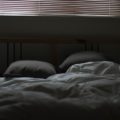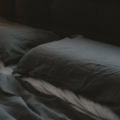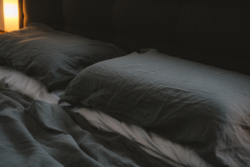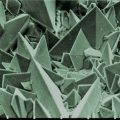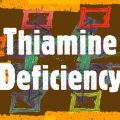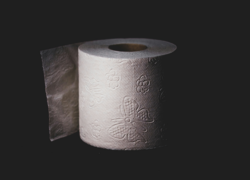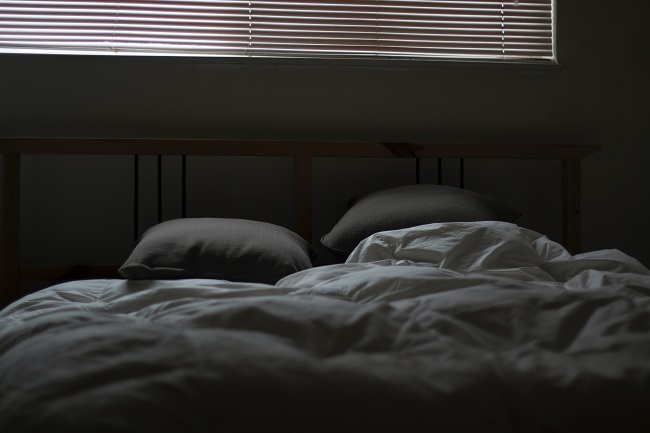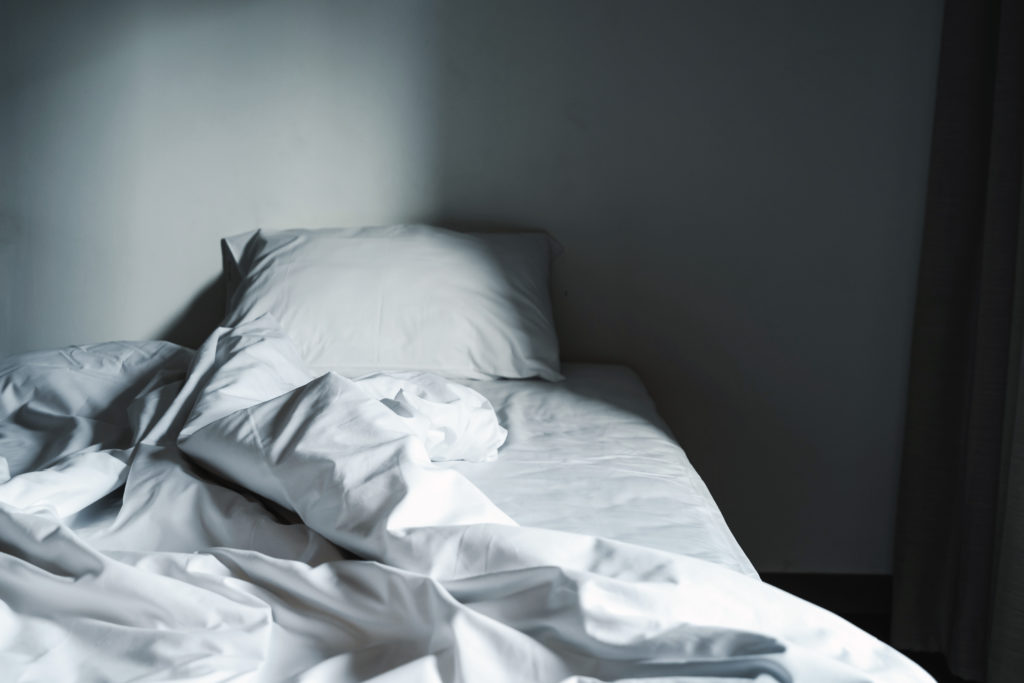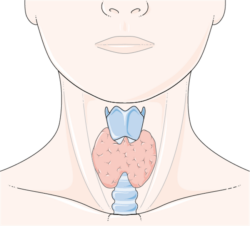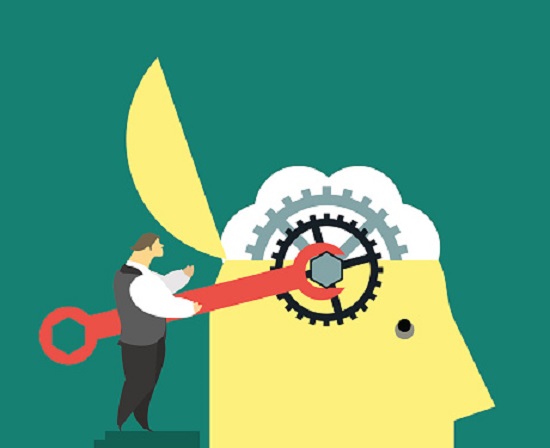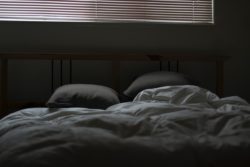There is a global crisis that seldom makes the headlines – it’s about sleep. Specifically that we are not getting enough and it is costing us our health, relationships and our capacity to work and govern.
Unsustainable work hours, artificial light, the rise of electronic devices and norms that preference night time socializing, have shifted the window of time we have for one of the most important activities in our day and for our health.
Despite decades of research, exactly why we need to sleep still remains somewhat of a mystery to modern science. Some of the theories include:
- Evolution theory: this says that sleep is a way to immobilize us at night when we are most vulnerable to predators. However, it ignores the fact that being awake when you are more vulnerable to predators is probably a smarter strategy!
- Restoration theory: posits that sleep helps to restore the energy we lose during the day whilst awake. A strong proof point for this theory is that animals lose immune function and die after just a few weeks without sleep. A 2020 Harvard study suggests that this is due to the accumulation of Reactive Oxygen Species (ROS) in the gut.
- Energy conservation theory: suggests that sleep serves to help us conserve energy, from times when energy was in short supply.
- Brain plasticity theory: explains sleep as a critical process for enabling changes in the structure and organization of the brain, required for health.
Whilst none of these theories have been fully proven, there is much research to prove the dangers of not sleeping enough, with increased risk of obesity, accidents, metabolic disorders, autoimmune conditions, cognitive decline, diabetes, hypertension, cardiovascular disease and morbidity, just to name a few. In fact, in the US alone, 7 of the 15 leading causes of death are linked to insufficient sleep.
How much each of us needs depends upon our life stage, health and genetics. Most healthy adults need between 7-9 hours whereas babies can need up to 18 hours per day and school aged children approximately 10 hours. As we age past 60, our sleep tends to get shorter and lighter with more awakenings. Some research suggests that adults on average are now getting less than 7 hours of sleep per night.
What Triggers Us To Sleep?
The increasing busyness in our lives has overridden many of the natural cues to sleep. Exposure to artificial light delays the secretion of melatonin, which is needed to prepare us for shut-eye. Night time socialization keeps us overly stimulated past the point where we might have felt naturally tired. Longer work hours and shift-work require us to work through fatigue and at times of the day when we would normally not be awake.
There are two vital biological processes at play in all of us which work in sync to trigger sleep: circadian rhythms and sleep-wake homeostasis. The relative force of social and work pressures will influence how much we override these processes, however ultimately our bodies will win. Humans cannot survive without sleep. As outlined earlier, after just a few weeks without it, our immune systems shut down and we die.
Circadian rhythms control the timing of our sleep – making us sleepy at night and waking us up in the morning. Our body’s biological clocks (based on a roughly 24 hour cycle) control our circadian rhythms. Biological clocks comprise protein molecules which interact with cells throughout the body. Virtually every tissue and organ in the body has its own biological clock.
Circadian rhythms are influenced by environmental cues such as light, however they will still function in the absence of these cues, which is why you can wake up once you’ve had enough sleep if you’re sleeping in a blacked-out room. Each of us have different circadian rhythms (e.g. the morning larks and the night owls) and our rhythms shift through our life stages, for example there is a shift to later sleep times during adolescence. Researchers have also identified genes involved in regulating our biological clocks. When one of these genes – translin – was removed from fruit flies, they had difficulty falling and then staying asleep.
Sleep-wake homeostasis controls the need for sleep, with this drive becoming slightly stronger every hour we are awake. Light exposure generally has the greatest influence over our sleep-wake homeostasis, with special cells in the retinas of our eyes communicating with the brain to regulate wakefulness. Other factors that influence sleep homeostasis include medical conditions, stress, diet, medical and other drugs, and our sleep environment.
Our circadian rhythms are set by a tiny region of the brain called the suprachiasmatic nucleus (SCN) – located in the hypothalamus. When it senses changes in light and other natural cues, the SCN tells the pineal gland (a small pea-shaped gland in the brain) to release melatonin, inducing sleep.
What Happens When We Are Asleep?
Clusters of neurons in our brains become extra active in order to send us off to sleep, with neurotransmitters including GABA calming down the cells that would otherwise keep us awake through arousal. When exposed to reduced light, the pineal gland produces a hormone called melatonin which contributes to feelings of tiredness. The secretion of melatonin shifts to later in the night during the teenage years, hence why adolescents tend to find it hard to go to bed early and generally need to sleep later in the morning.
Whilst asleep, we cycle through different stages: rapid eye movement (REM) and non-REM sleep, the latter of which encompasses three distinct phases:
- Stage 1: the changeover from wakefulness to sleep, where our heartbeat, eye movements and brain waves slow down and our muscles relax. This stage lasts only a few minutes.
- Stage 2: this is the prelude to deep sleep. Further slowing of body systems continues from Stage 1, eye movements stop and our temperatures drop. Our brain waves continue to slow but are punctuated with brief moments of heightened electrical activity.
- Stage 3: is where breathing, brain waves and heart-rate are at their slowest. This is the stage needed to feel most refreshed when you wake. In a normal sleep cycle, typically 1-2 hours are spent in this deep restorative sleep stage. It is usually quite hard to wake someone in this stage.
During REM sleep, our eyes move from side to side, breathing, heart-rate, brain wave frequency and blood pressure increase to similar levels seen in wakefulness. This is the stage in which most dreams occur. During REM sleep our muscles remain paralyzed, presumably so we can’t act out our dreams. We spend approximately 2 hours per night dreaming, but not all of us can recall our dreams.
- Busy brains. As we can see from examining the different stages of sleep above, our brains are highly active whilst we are asleep. During sleep, the brain is processing information from the day and storing it as memory. It is thought that memory consolidation takes place in both REM and non-REM sleep. A mouse study conducted in 2012 found that deep sleep also flushes cerebrospinal fluid through the brain, removing toxins that have built up during the day – a sort of brain detox if you will.
- A symphony of hormones. A number of different hormones are secreted whilst we are sleeping. The pituitary gland releases growth hormone which enables growth and repair. This is why sleep and rest are particularly important for growing children and teenagers, athletes (to enable full recovery from sport) and those recovering from illness. The stress hormone cortisol decreases during the first 2 hours of sleeping only to peak just after we wake so that we can take on the day. The hormones leptin and ghrelin, critical to appetite regulation, are also higher whilst asleep.
- Immune function. During sleep, the immune system releases cells called cytokines and T-cells which help the body counter inflammation, stress and trauma. Research shows that sleep plays an important role in immunological memory.
- A relaxed nervous system. Whilst asleep – our fight-flight system relaxes, which helps to regulate our blood pressure. Researchers have found sleep deprivation increases blood pressure and increase the risk of heart disease.
Clearly, this mysterious process about which we still know relatively little is vital to our health. So what happens when we don’t sleep enough?
The Effects of Too Little Sleep
The Brain and Neurological Function
Lack of sleep reduces activity in the hippocampus – a part of the brain that plays a key role in memory and learning, executive functioning, and emotional processing. It also monitors our decision-making centers to track our past choices. This explains why getting a good night’s sleep is a better strategy than pulling an all-nighter for an exam or work task in which memory is required. Even a single night of poor sleep affects executive function. Sleep deprivation also affects parts of the brain involved in decision-making, attention and concentration, especially vigilance, and mood.
After missing just one night of sleep, the mesolimbic pathway (a neural circuit controlling pleasure and reward) in the brain is strongly stimulated, leading to a feeling of euphoria. The neurotransmitter dopamine modulates this process. Whilst initially this may feel good, the rise in dopamine leaves you at greater risk of addiction and impulsivity. Combined with the effects of sleep deprivation on executive function, memory and decision-making, rashness and risk-taking can quickly follow as less sleep ensues. Research suggests that if the mesolimbic pathway is continuously activated, permanent brain damage may result.
The profound effects of sleep on the brain has led researchers to conclude there are strong links between sleep deprivation and neuropsychiatric diseases, including anxiety disorders, bipolar, post-traumatic stress disorder, Alzheimer’s, and substance abuse.
Nervous System and Immune Function
Sleep loss dials up the sympathetic nervous system, which can lead to a rise in blood pressure and an increase in the stress hormone cortisol. During non-REM sleep, parasympathetic activity is dialed up whilst sympathetic activity is dialed down. This means that insomnia and sleep deprivation leads to an over-activation of the sympathetic nervous system both during sleep and wakefulness. The central nervous system modulates our immune system – activating the HPA axis to release glucocorticoids and activating the sympathetic nervous system which releases pro-inflammatory cytokines. As a result, high levels of sympathetic activity favor pro-inflammatory pathways, with damaging effects for our immune function.
Cardiovascular System
During the peak of the economic boom in Japan in the eighties, sleep deprivation was blamed for a large number of deaths – referred to as “karoshi” (death from overwork) – caused by cardiovascular events. Research has found a strong association between increased hypertension and poor sleep (less than 5 hours) in middle-aged people. This is thought to be caused by disruption to autonomic nervous system regulation.
A number of studies have demonstrated a correlation between sleep disruption and increased risk of cardiovascular disease, specifically acute myocardial infarction. The mechanism is thought to be due to the effect of sleep deprivation on increasing sympathetic nervous system activity, and elevating catecholamine (stress hormone) levels.
Digestive System
The intricate relationship between the gut and the brain involves feedback loops, which are influenced by and in turn influence circadian rhythms and sleep regulation pathways. Hence, research is increasingly pointing to strong links between sleep disturbances and gastrointestinal problems, particularly stemming from the immune effects of sleep deprivation.
Proinflammatory cytokines, such as tumor necrosis factor (TNF), interleukin-1 (IL-1), interleukin-6 (IL-6) and interleukin-8 (IL-8), which are produced as a result of sleep dysfunction, are also implicated in gastrointestinal diseases, including gastrointestinal reflux disease (GERD), inflammatory bowel disease, and colorectal cancer. For example, sleep disturbances are associated with an increase in flare-ups of Crohn’s disease. Elevated levels of IL-8 are found in the gut mucosa of patients suffering from GERD. IBS patients show high levels of IL-1, IL-6, IL-8 and TNF. Researchers studying mice with colitis found that sleep deprivation worsens their inflammation. Further, IL-6 is known to be a key growth factor for colon cancer.
The relationship between poor gut health and sleep is a complicated one because poor gut health is known to impact adversely on sleep, contributing to a vicious cycle of declining sleep quality and worsening gut symptoms. This chicken and egg situation can make it challenging for researchers to accurately pinpoint what came first – the poor sleep or the poor gut health.
Endocrine and Metabolic Effects
Research points to a strong association between sleep deprivation and a number of serious metabolic and endocrine disorders, including diabetes mellitus. Alarmingly, a 2015 study on dogs found that one night of poor sleep had the same deleterious effects on insulin of 6-months eating a Standard American Diet (SAD). Slow-wave sleep (SWS) in particular is thought to play a critical role in glucose homeostasis, with slow-wave sleep suppression leading to reduced insulin sensitivity.
When sleep is insufficient, key hormones controlling appetite and food intake – ghrelin and leptin – are also disrupted. Hence, short sleep duration is implicated as a risk factor in obesity, among both children and adults. A survey on sleep duration and insomnia in more than 1.1 million Americans between the ages of 30-102, found higher body mass indexes (BMI) among those chronically sleeping less than 7–8 hours per night. A study of six year olds found that persistently low sleep durations (less than 10 hours per night) was associated with a 4.2x greater risk of obesity than children sleeping 11 hours per night.
Research finds dysregulation of lipid profiles associated with sleep disturbance. A study of more than four thousand women and men over the age of 20 found women sleeping less than 5 hours a night or more than 8 hours per night had high serum triglycerides and low HDL cholesterol. A larger longitudinal study of over 14,000 young people found that short sleep duration was a risk factor for hypercholesterolemia, particularly among young women.
Sleep is also critical for healthy bones with circadian clock genes playing a key role in the regulation of bone mass. For example, night shift work and its reduction in sleep duration has been found to alter bone metabolism. A 2010 study of 70 Chilean nurses found a higher prevalence of osteopenia among night shift nurses compared to day shift nurses. Several other studies draw links between night shift workers and lower bone density and higher fracture risk however more in depth research over longer periods of time is likely needed.
How Can We Improve Our Sleep?
It is clear that the dangers of too little sleep are numerous, so what can we do to reverse the trends in worsening sleep?
Clearly, individual change alone will not be enough. Social pressures and our 24/7 culture and economies have a lot to answer for in driving unhealthy sleep patterns. The social impacts of poor sleep are enormous with a greater risk of workplace accidents and poor health costing us and our governments dearly. For example, a 2016 RAND study found that sleep deprivation cost the United States $411 billion and 1.2 million working days per year in lost productivity. An employee who has worked for 17-19 hours has the performance ability of someone with a blood alcohol level of 0.05% (the legal limit in the US is 0.08%).
Fixing the global sleep crisis requires all of us to play a part and will require, among other things, rethinking our attachment to unfettered economic growth and the unsustainable work patterns and lifestyles this creates. For example, what would happen if we paid workers the same but expected them to work a shorter week? British research suggests the benefits outweigh the disadvantages, with ⅔ of UK businesses operating on a 4 day work week reporting improvements in staff productivity, almost 80% of staff reporting higher levels of happiness and lower levels of stress and over 60% of staff taking fewer sick days. And what if the start time for high schoolers was shifted back a little, as the American Academy of Pediatrics has recommended, to enable them to get adequate sleep given their later melatonin release? These and more are all questions that require more attention.
Whilst large-scale social and cultural change like this takes time, there are plenty of things that each of us can do in the meantime to boost our sleep. Here are a few:
- Make sleep top of your to-do list. As this article has highlighted, the effects of too little sleep are diverse and deep, yet for so many of us, sleep depends upon how well we progress through our to do lists. What if we flipped this on its head and made sleep top of our to-do list? Perhaps we would find it a lot easier to get everything done or realize, with the benefits of our enhanced executive function from proper sleep, that we were being unrealistic in what we were trying to achieve and instead set more realistic goals.
- Take a look at your nutrition. Getting good quality wholesome food throughout the day is critical for sleeping well. Under-eating is associated with poor sleep and greater awakenings. Under-eating during the day can also lead to overeating at night, landing you in bed with a stomach full of undigested food that keeps you awake or leads to poor quality sleep. Including some carbohydrate in your evening meal has been found to help with the release of serotonin and tryptophan, both of which are critical for sleep. Finishing your evening meal a good few hours before bed so that you are not going to bed with a full stomach also helps with sleep, so that your body can focus on rest and repair rather than digesting that huge meal you just ate.
- Dial down light and stimulation. Prior to the invention of electricity and electronic devices, we tended to go to bed soon after the sun set and wake when it rose. Nowadays we can stay up 24/7 with the constant stimulation of devices, artificial light and changing work patterns. Electronic devices and lights emit high levels of blue light which block the release of melatonin more powerfully than any other form of light at night. This is why switching off the devices a couple of hours before bed is a good idea. Alternatively, you can install apps like f.lux which reduce the amount of blue light being emitted from your screen. Or invest in a pair of blue light blocking glasses that you put on as the sun sets.
- Darkness, quiet, cool. Make sure that the place where you sleep is free from light intrusion. You can get black-out blinds to help with this or simply hang extra material/blankets over your existing curtains, for a cheaper option. Your sleeping quarters should also be quiet and cool.
Our quality of sleep affects everything: our health, happiness, work, and economies. Greater leadership within governments and workplaces is needed to shift our cultures away from the trajectory they are on where getting less sleep is worn as a badge of honor. At the end of the day, there are very few things that are worth losing sleep over, considering the dangers of sleep deprivation.
We Need Your Help
More people than ever are reading Hormones Matter, a testament to the need for independent voices in health and medicine. We are not funded and accept limited advertising. Unlike many health sites, we don’t force you to purchase a subscription. We believe health information should be open to all. If you read Hormones Matter, like it, please help support it. Contribute now.
Yes, I would like to support Hormones Matter.
Image by Mike Palmer from Pixabay.
This article was published originally on January 28, 2021.

